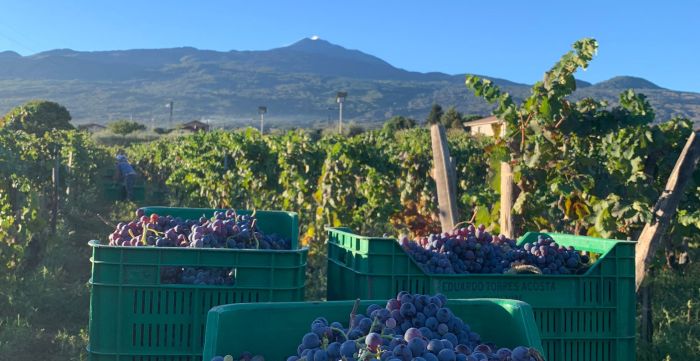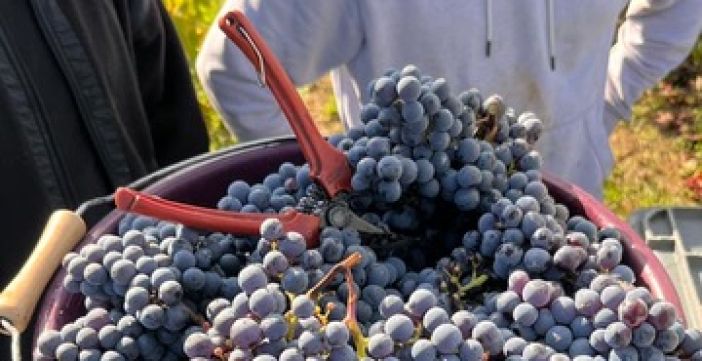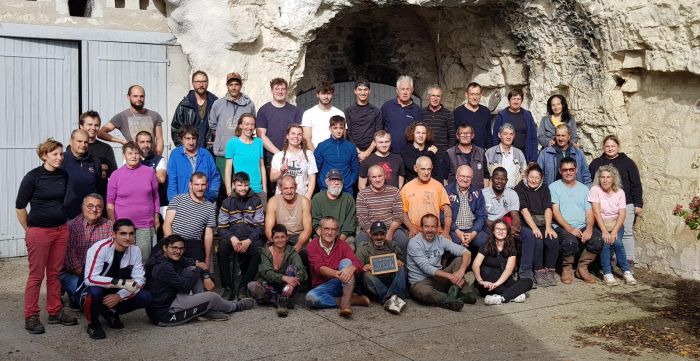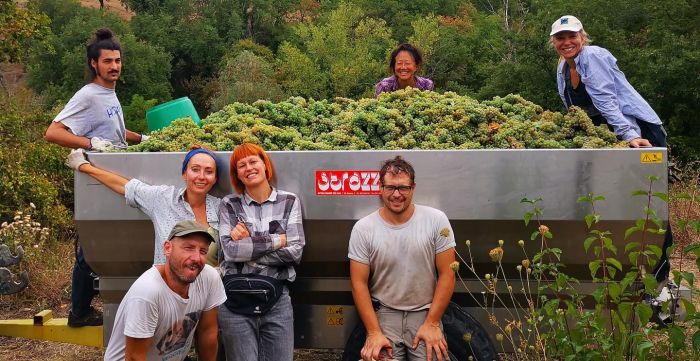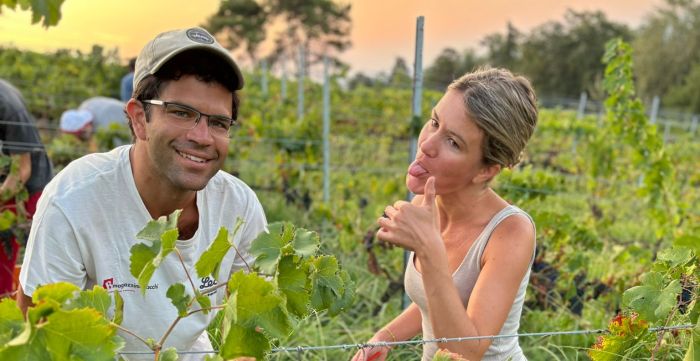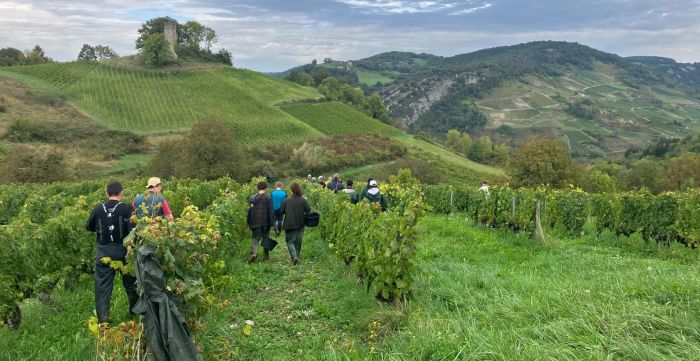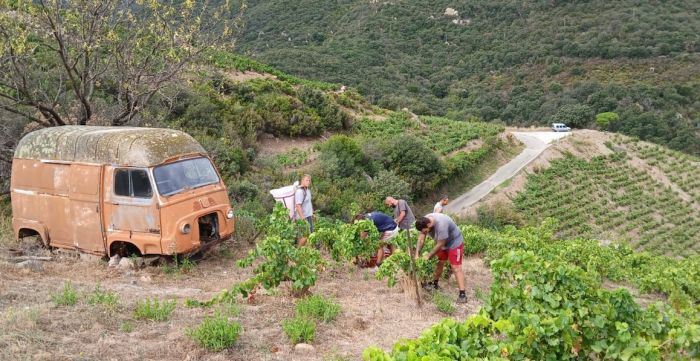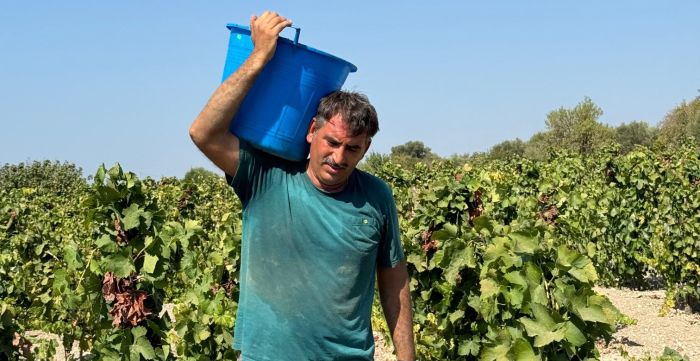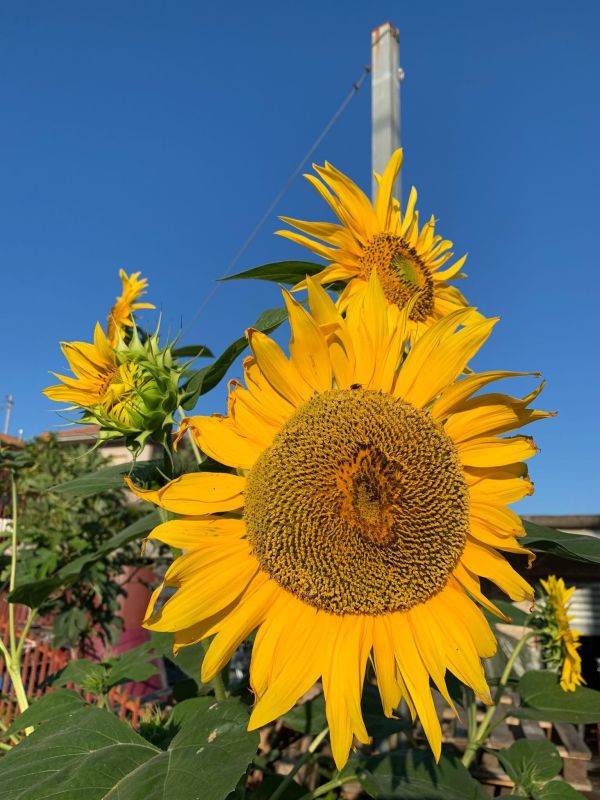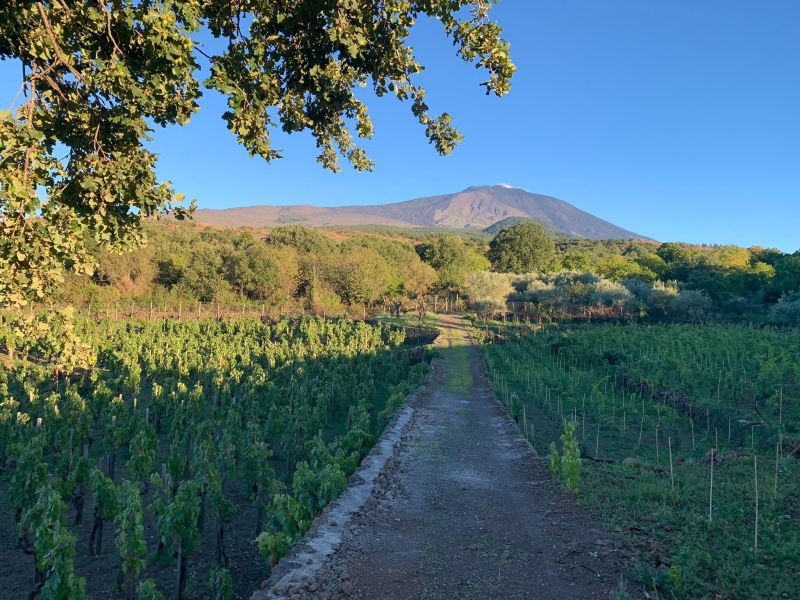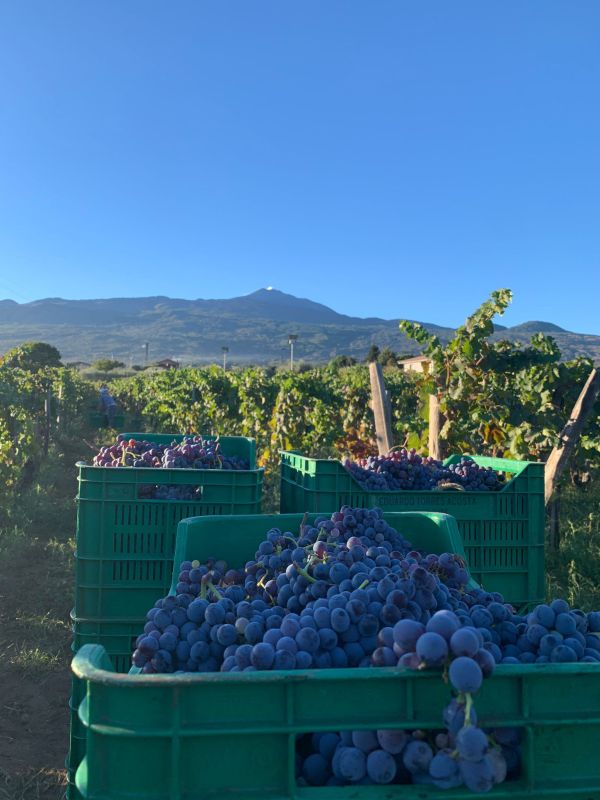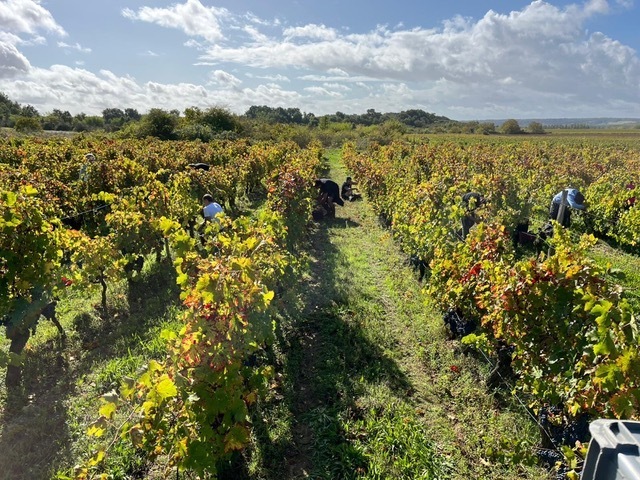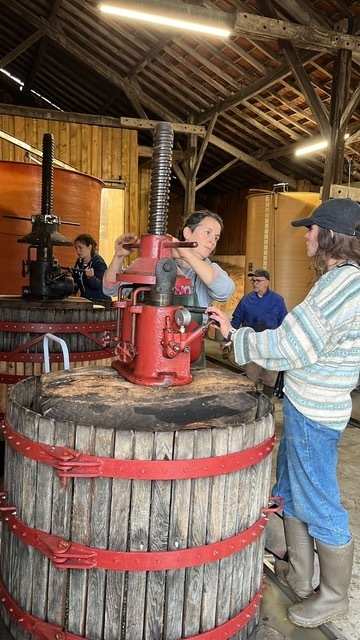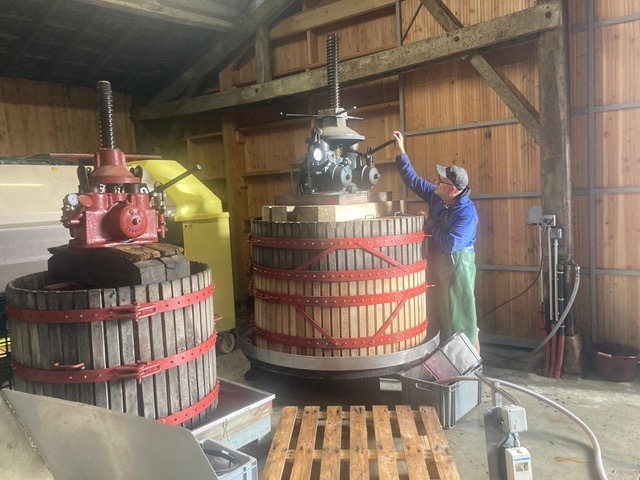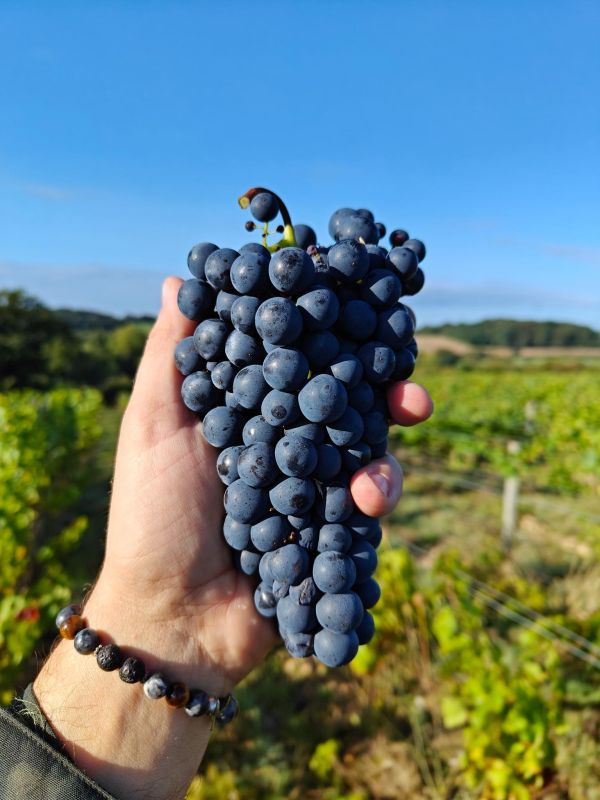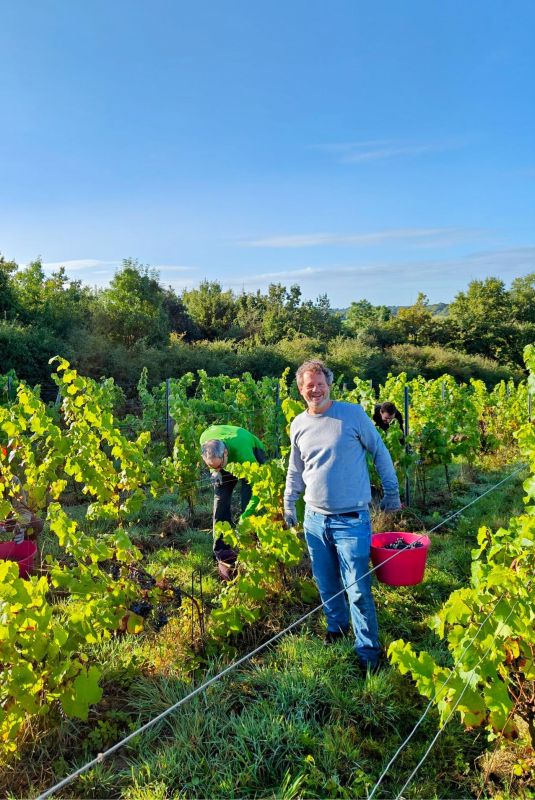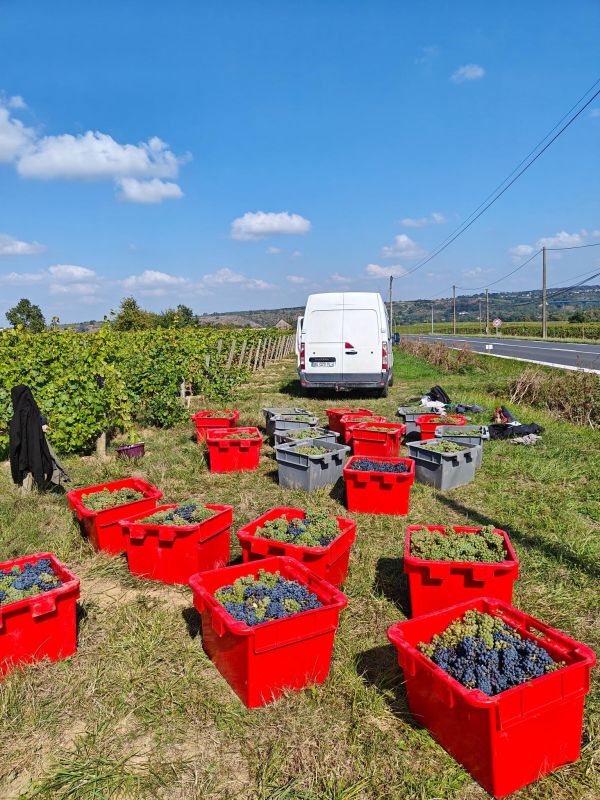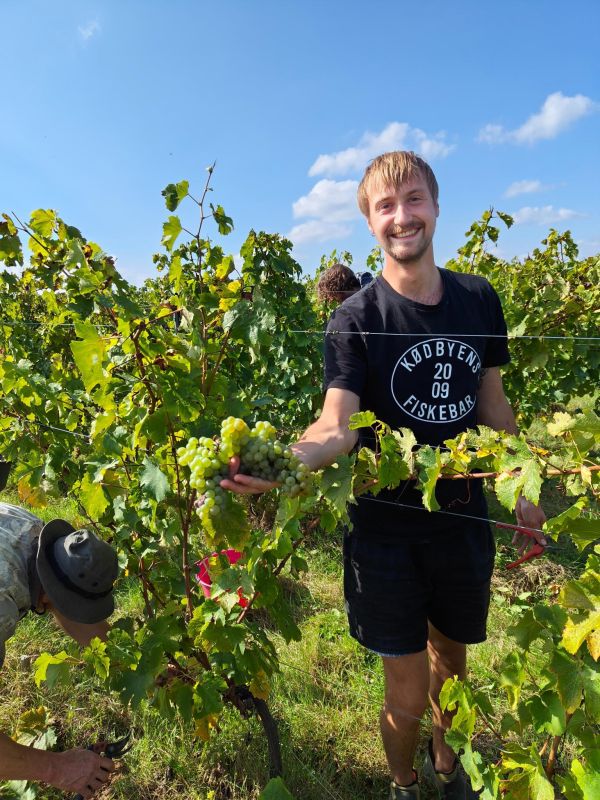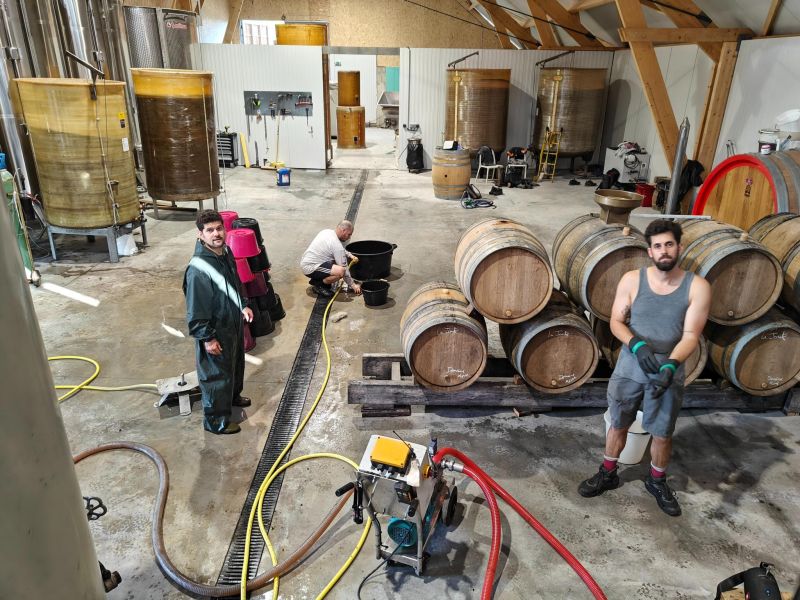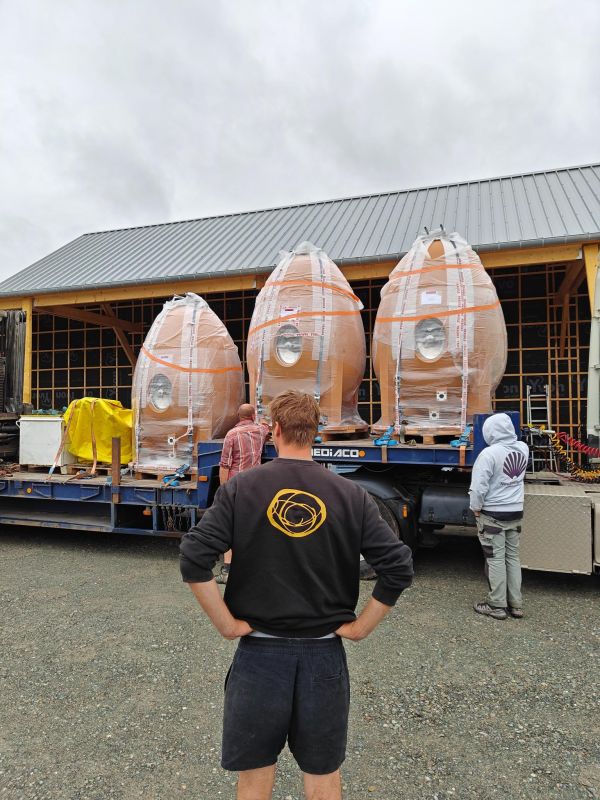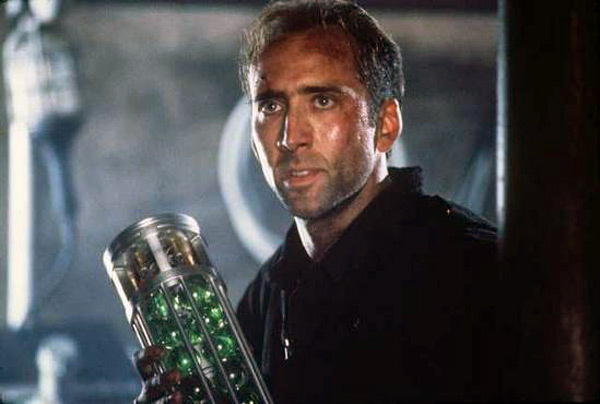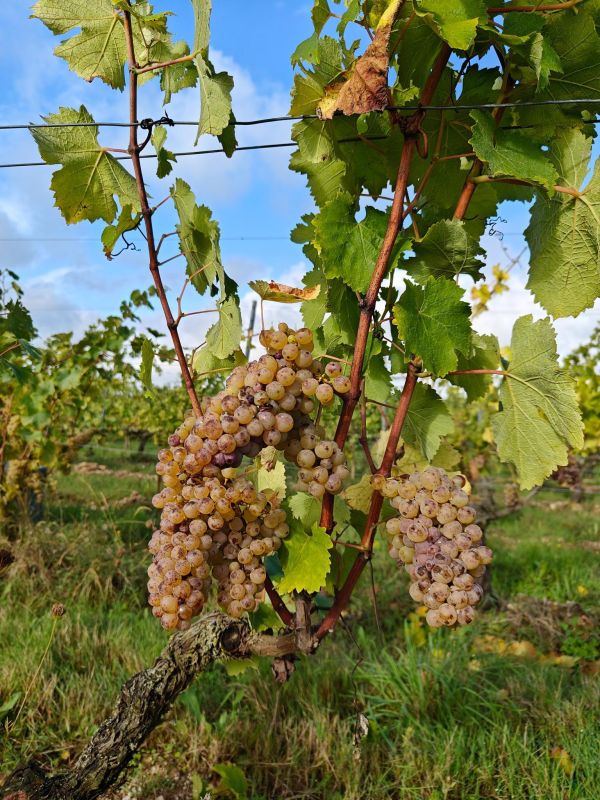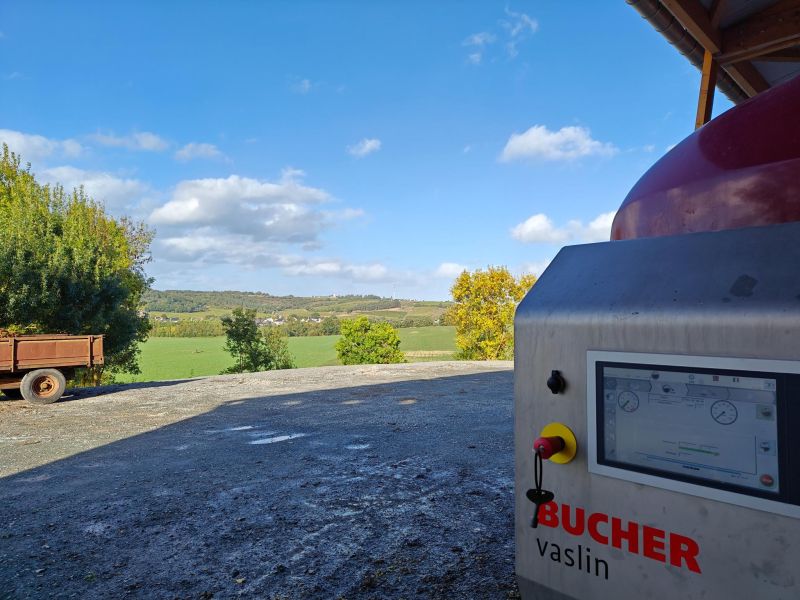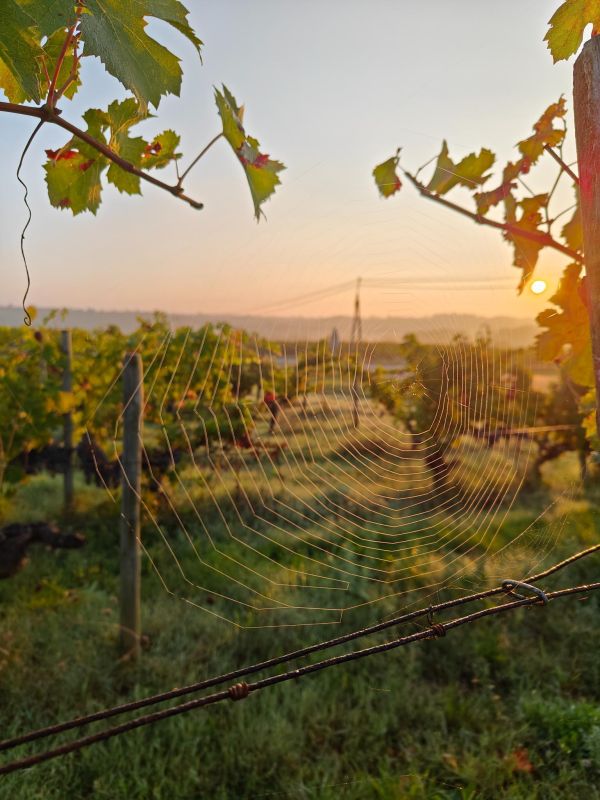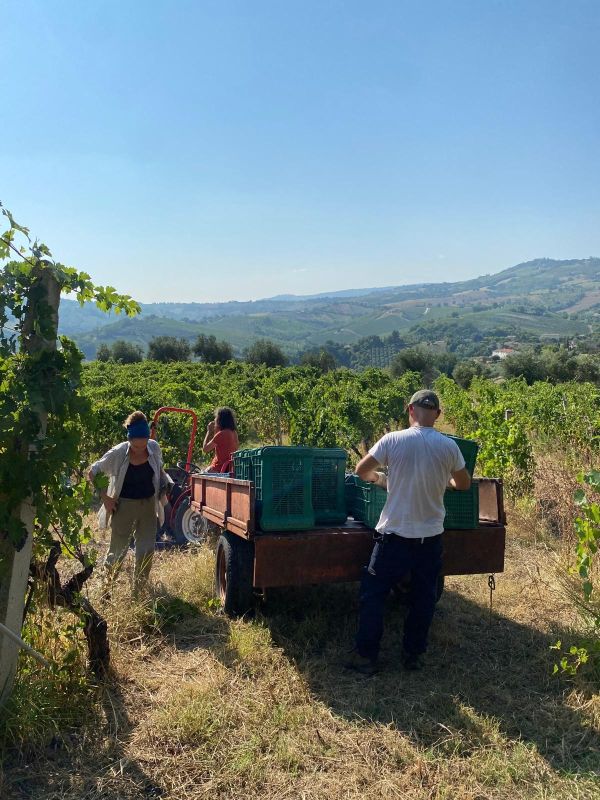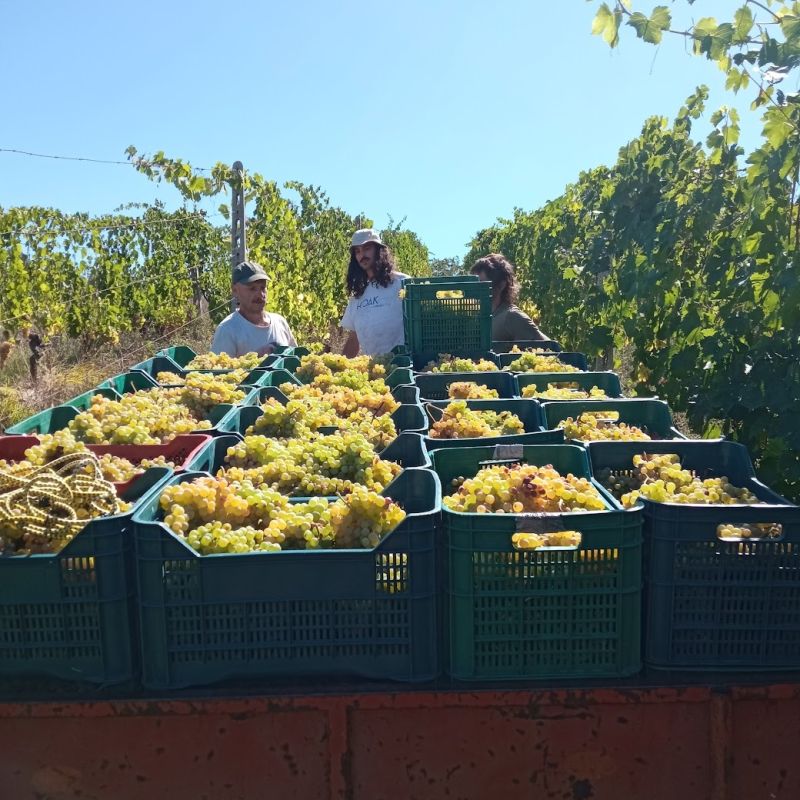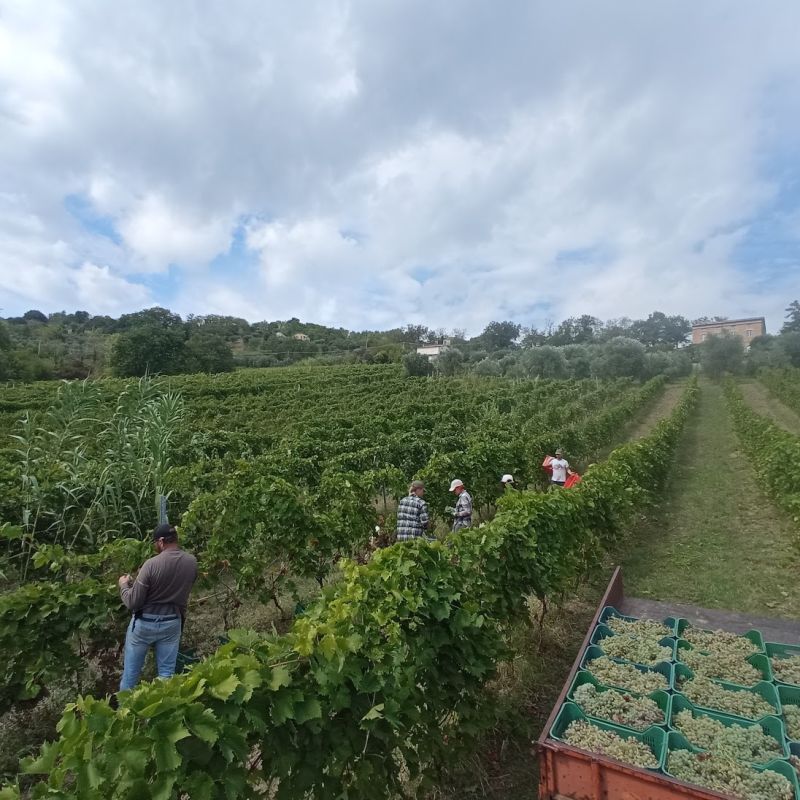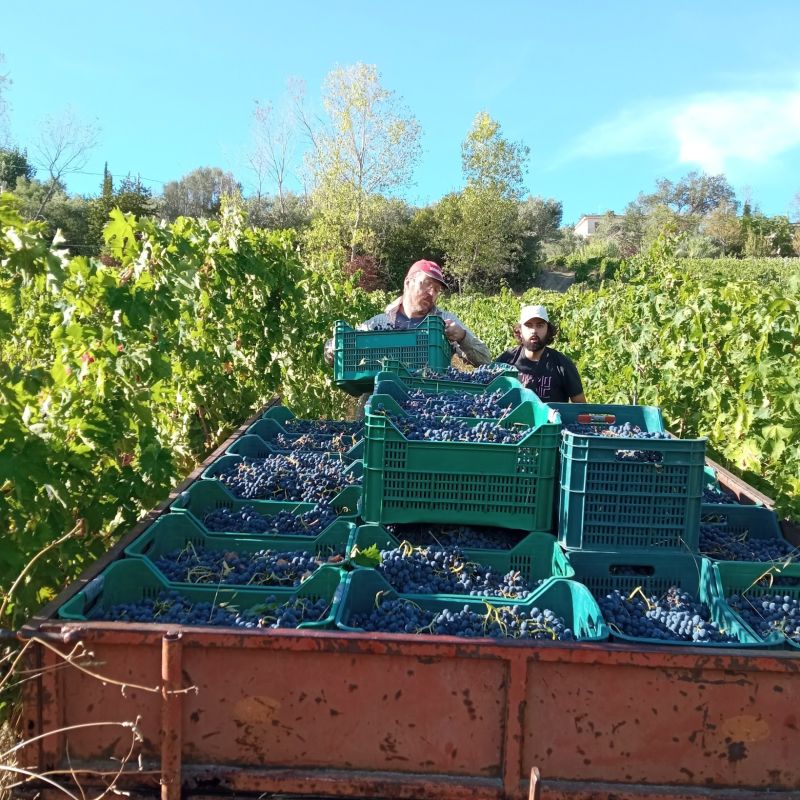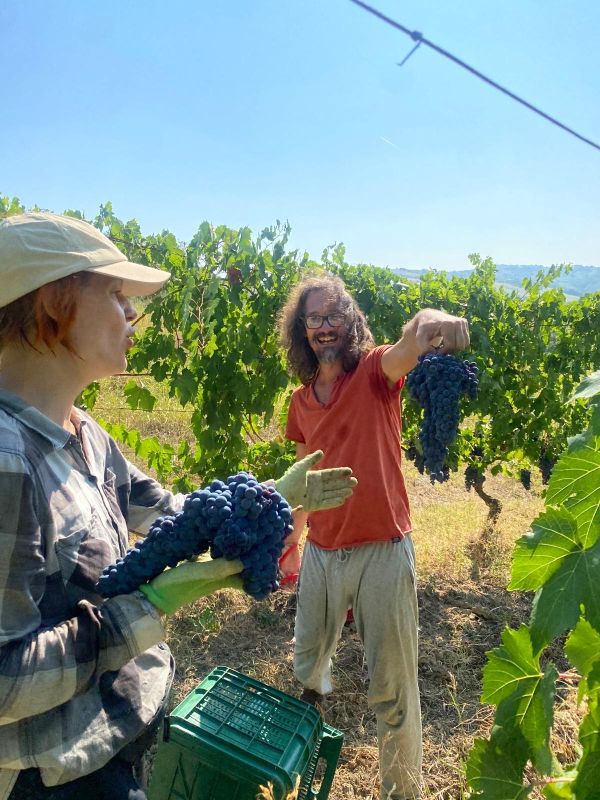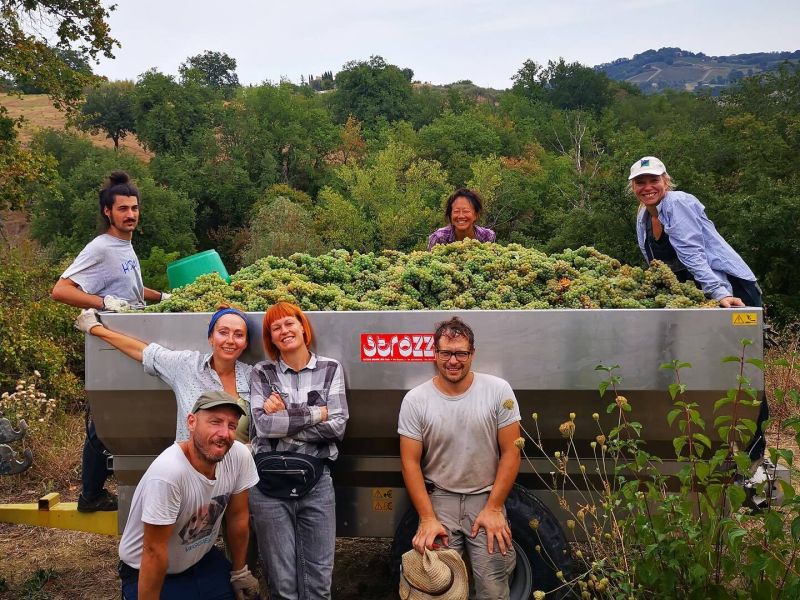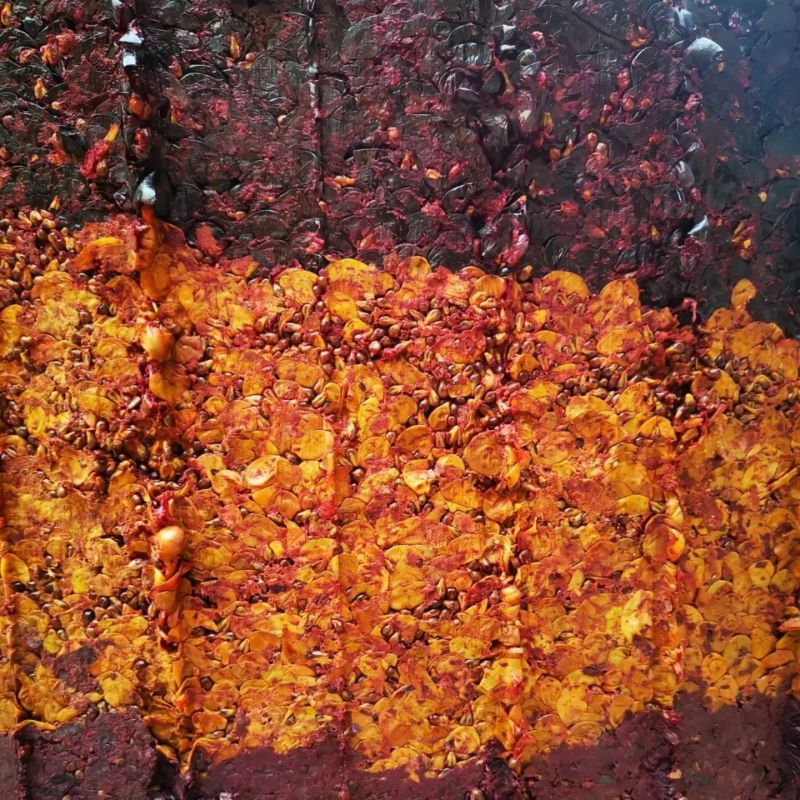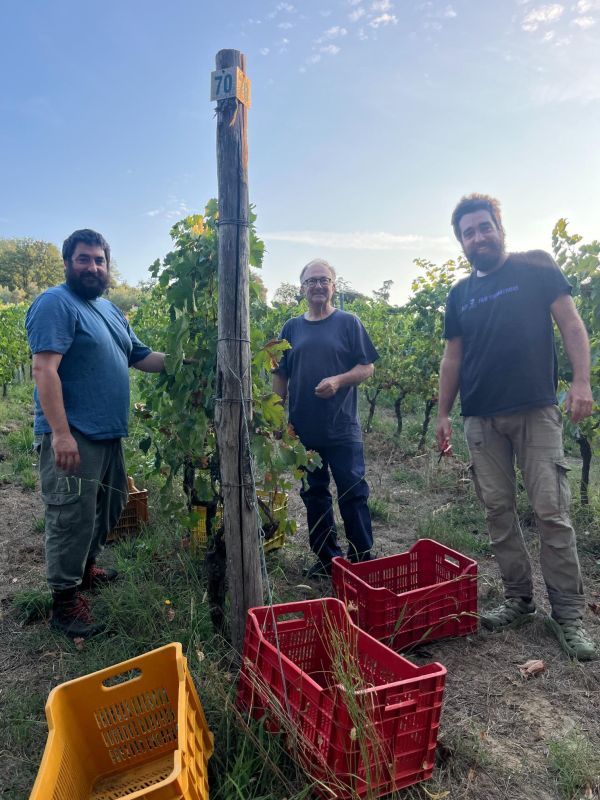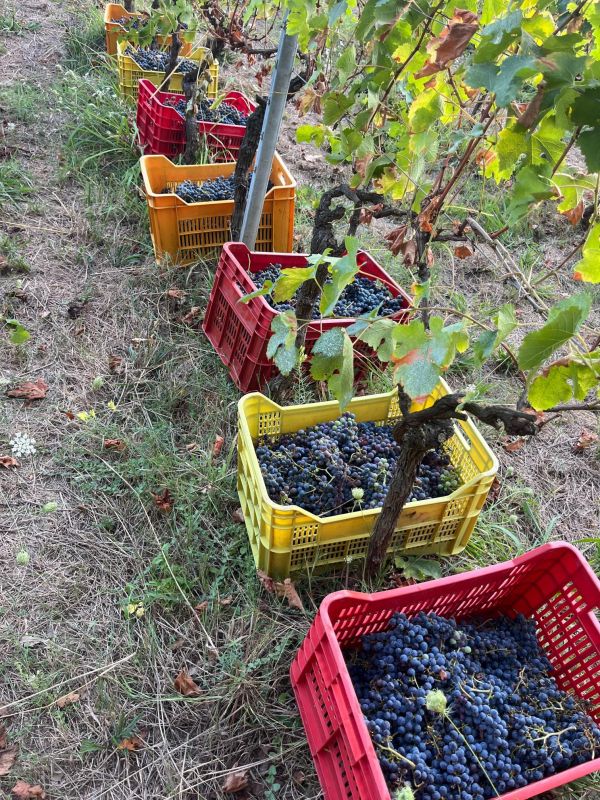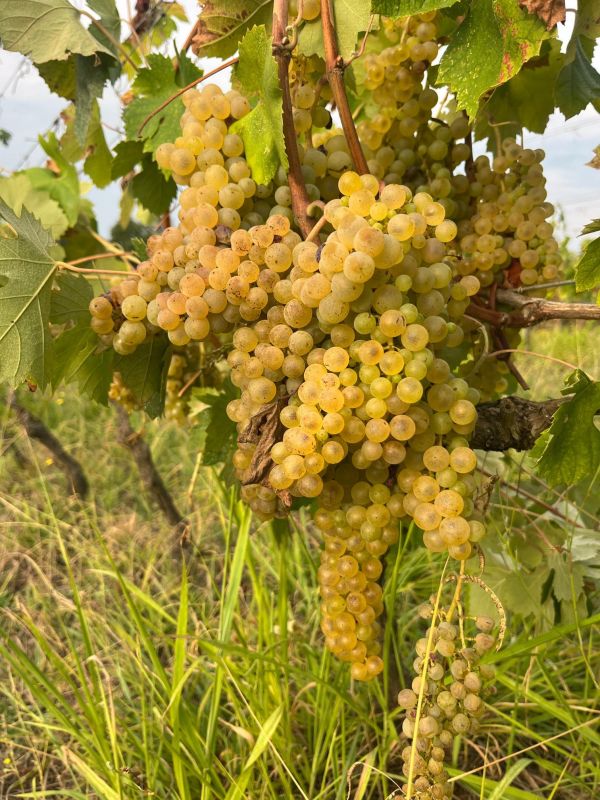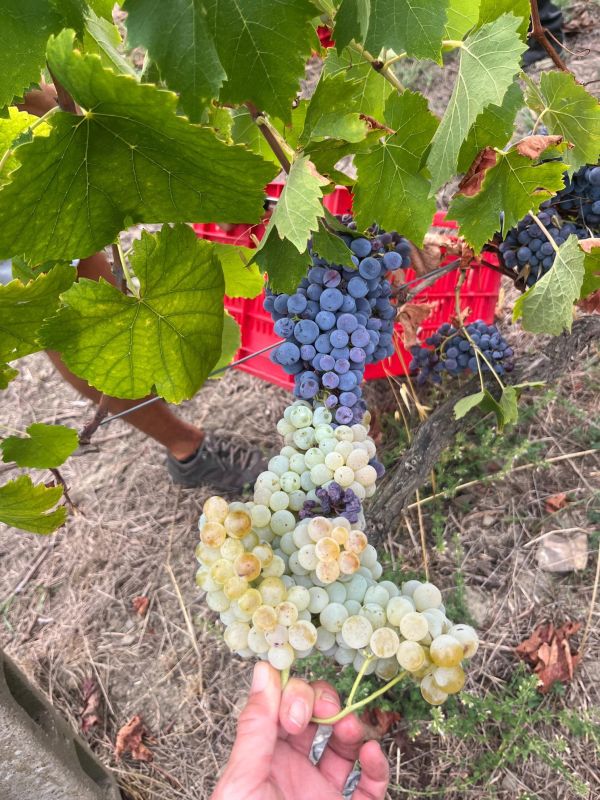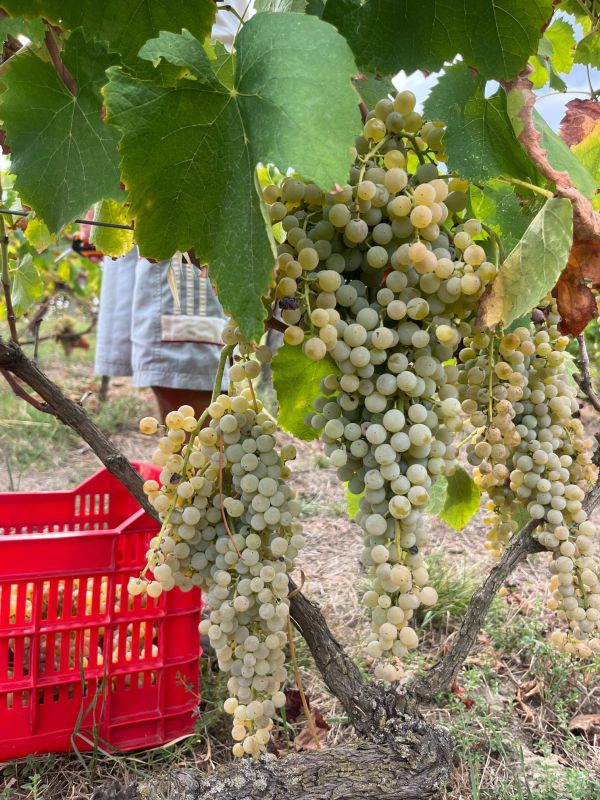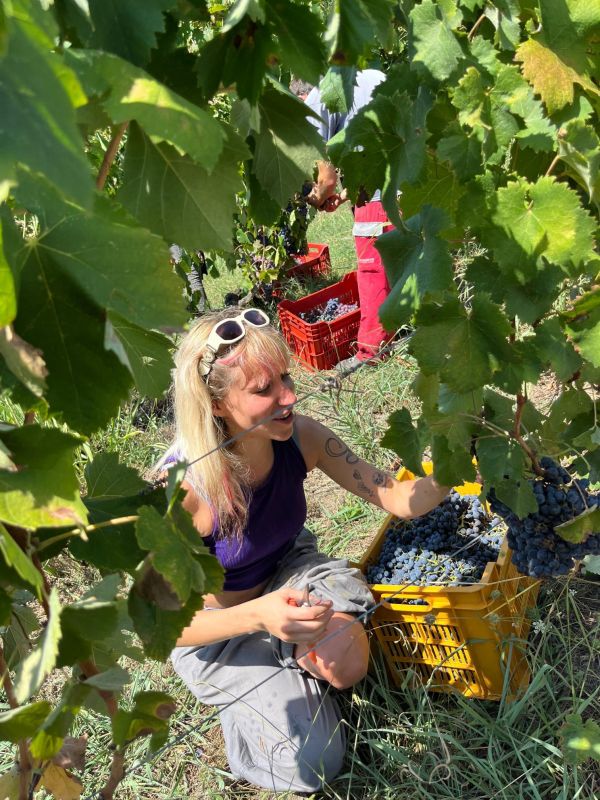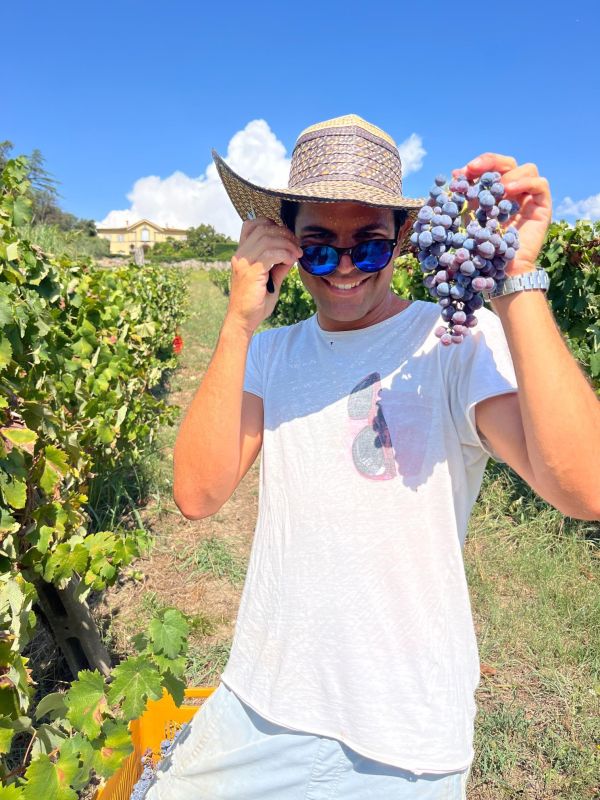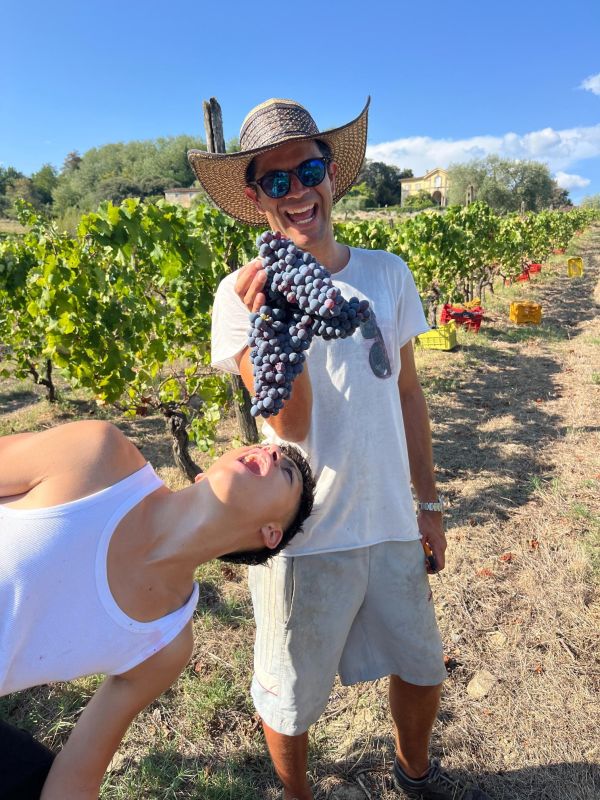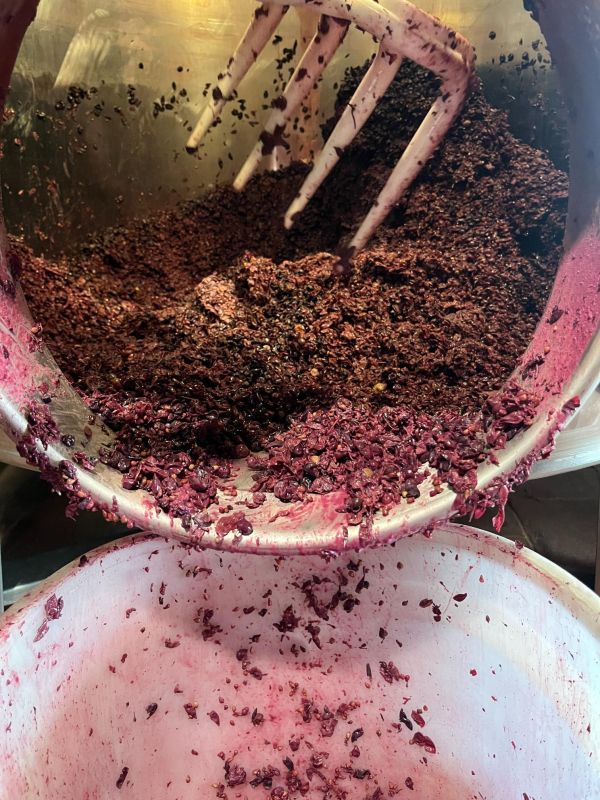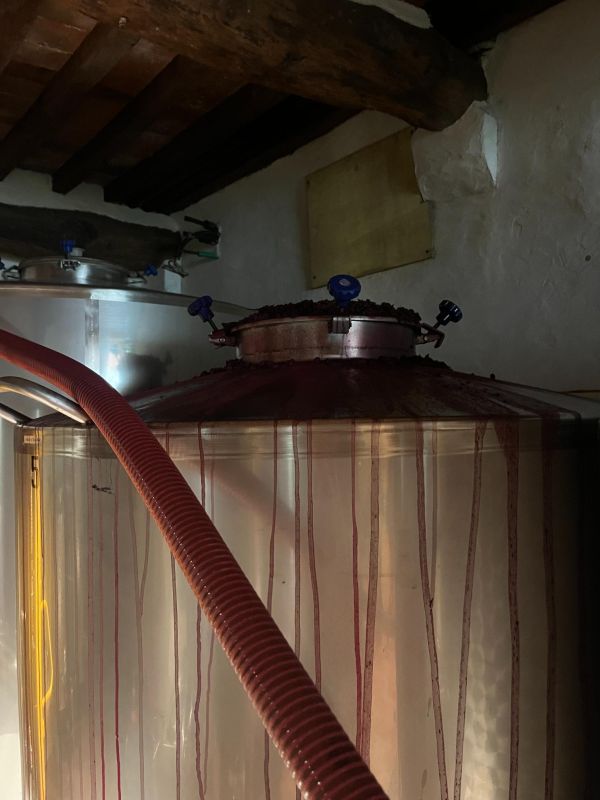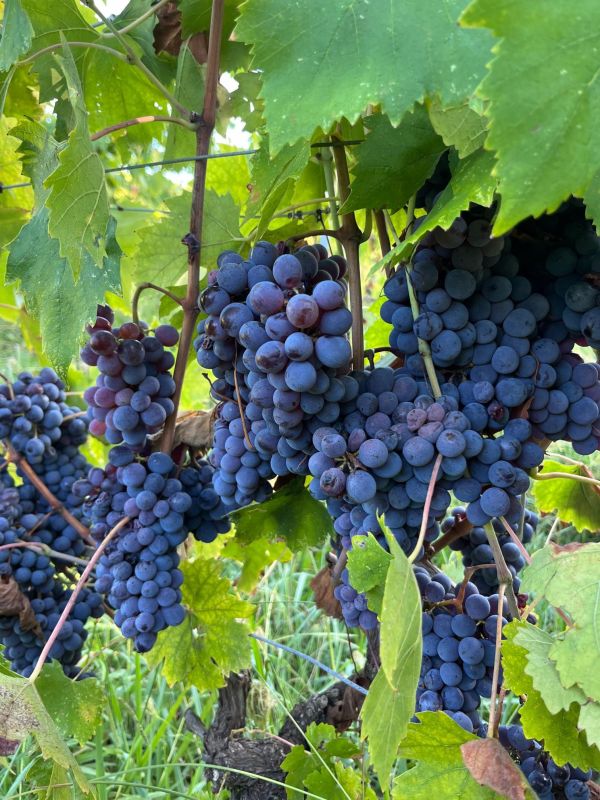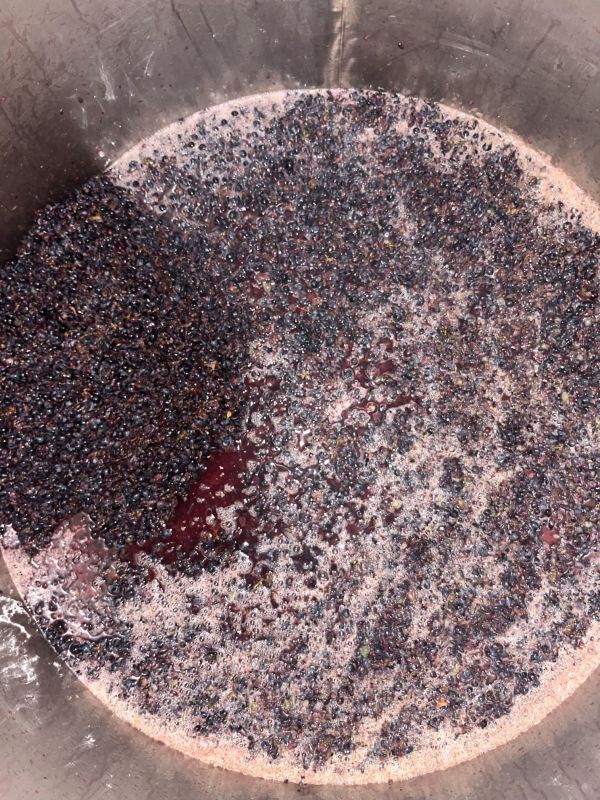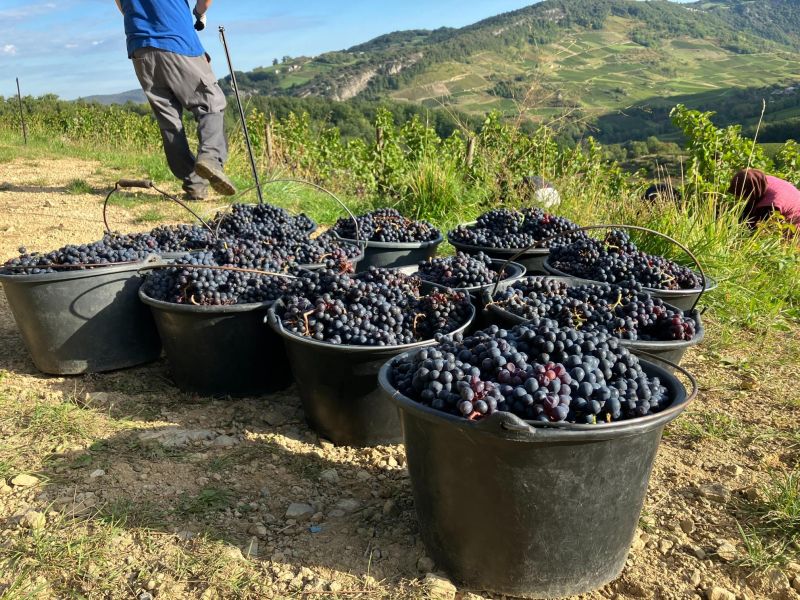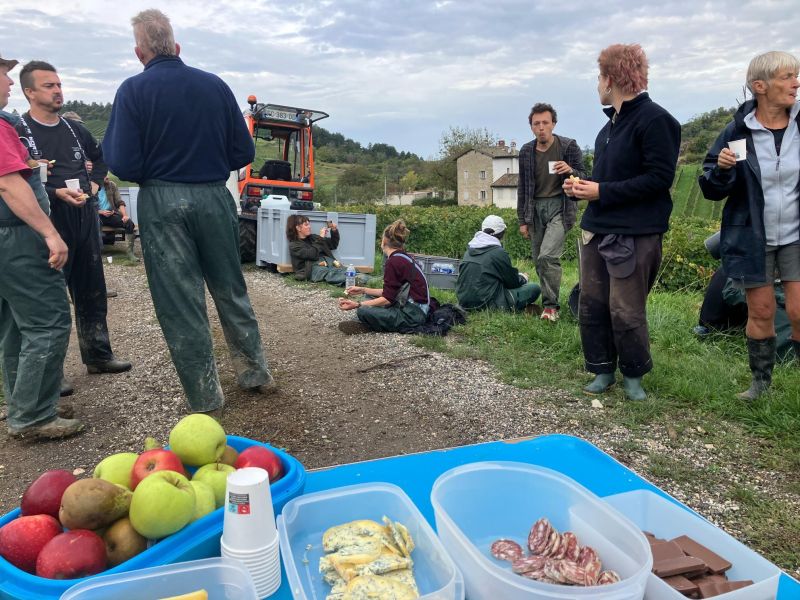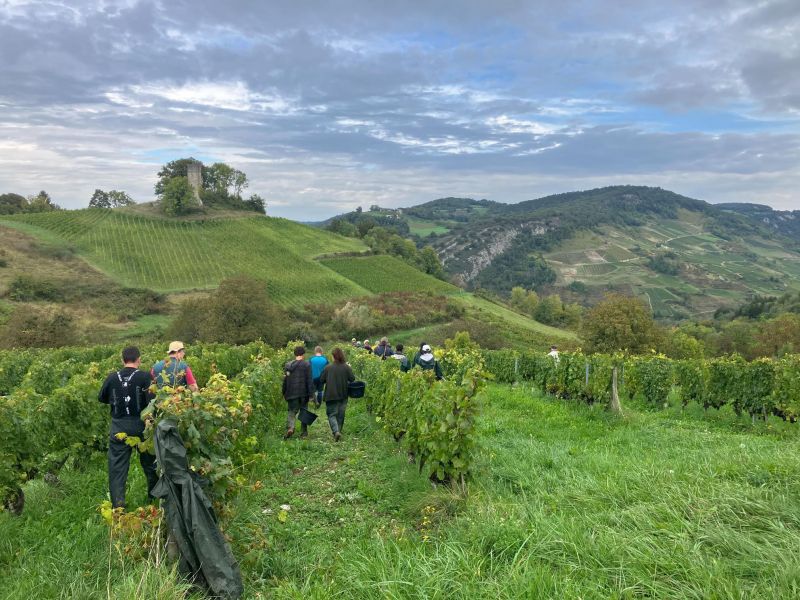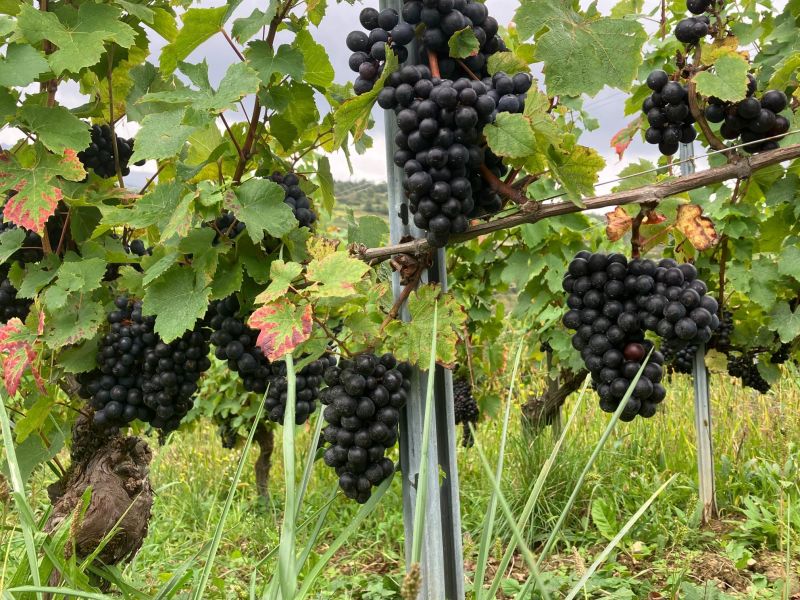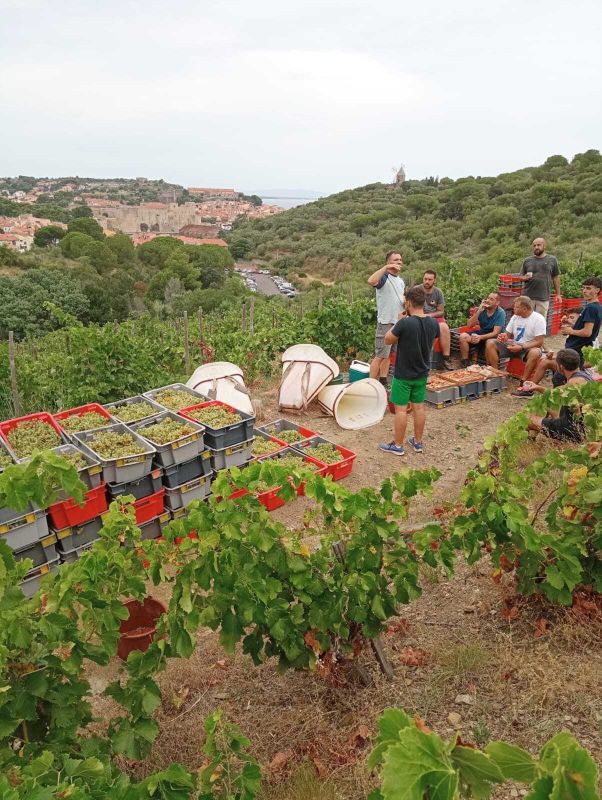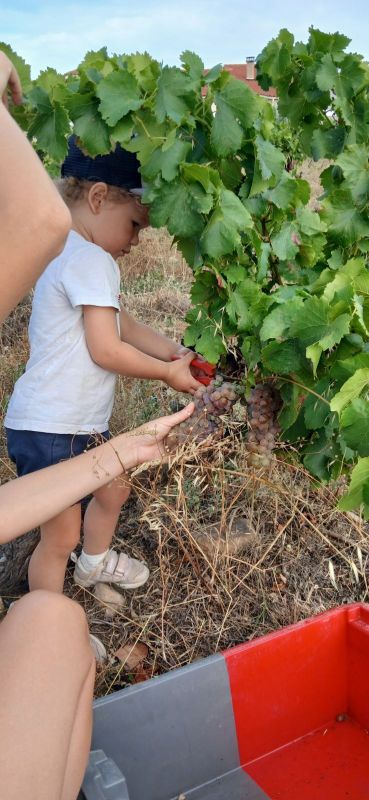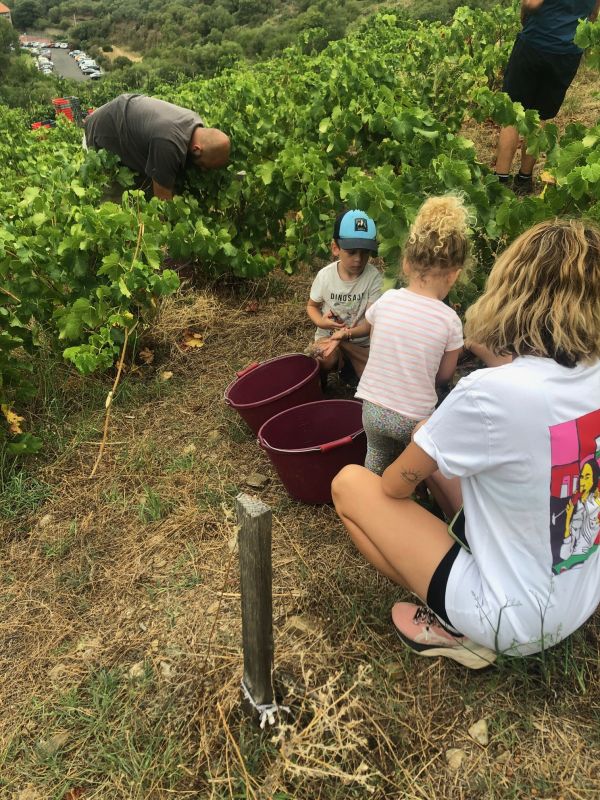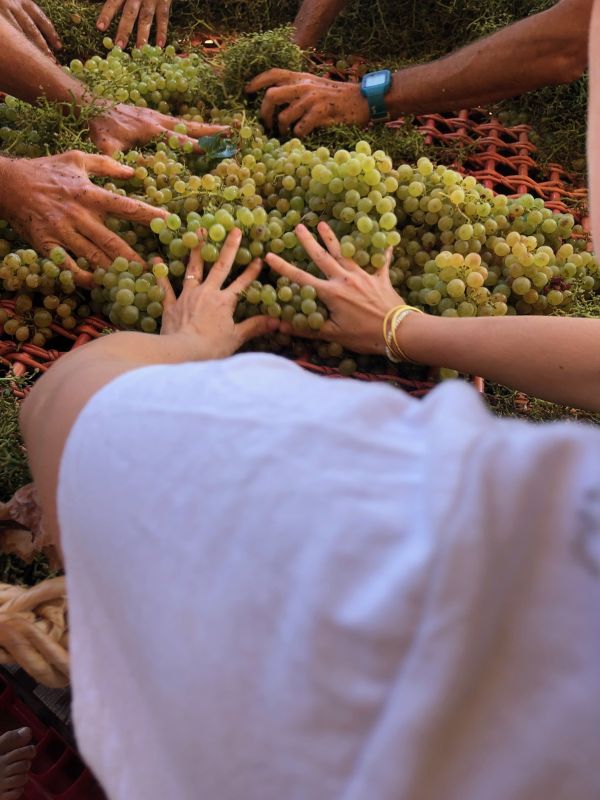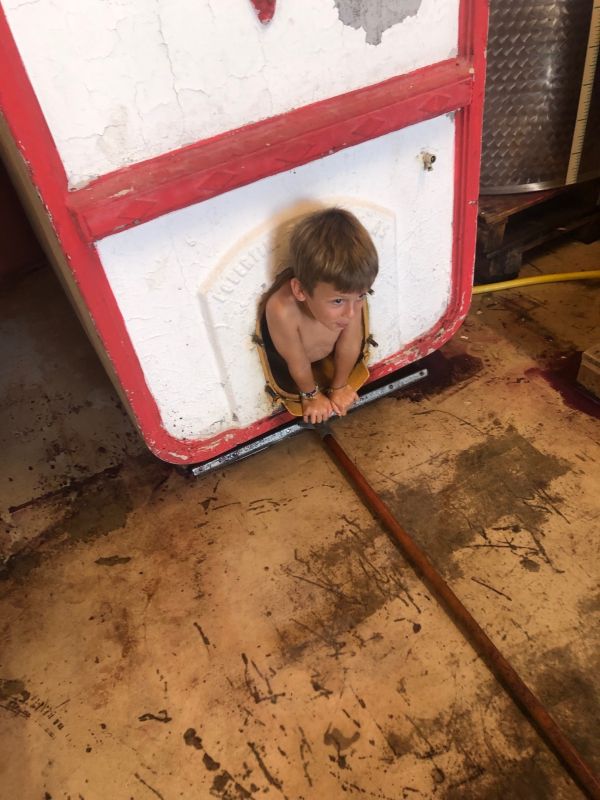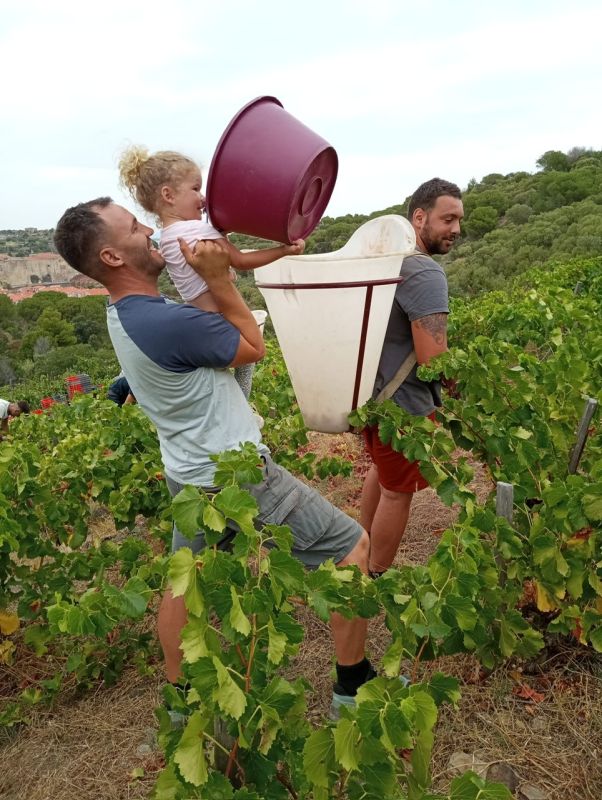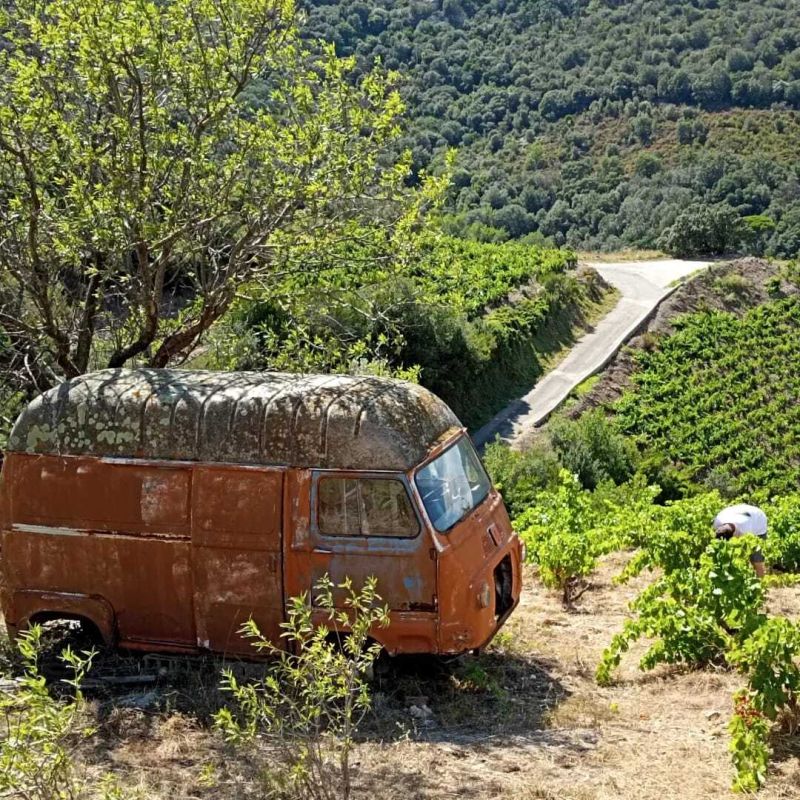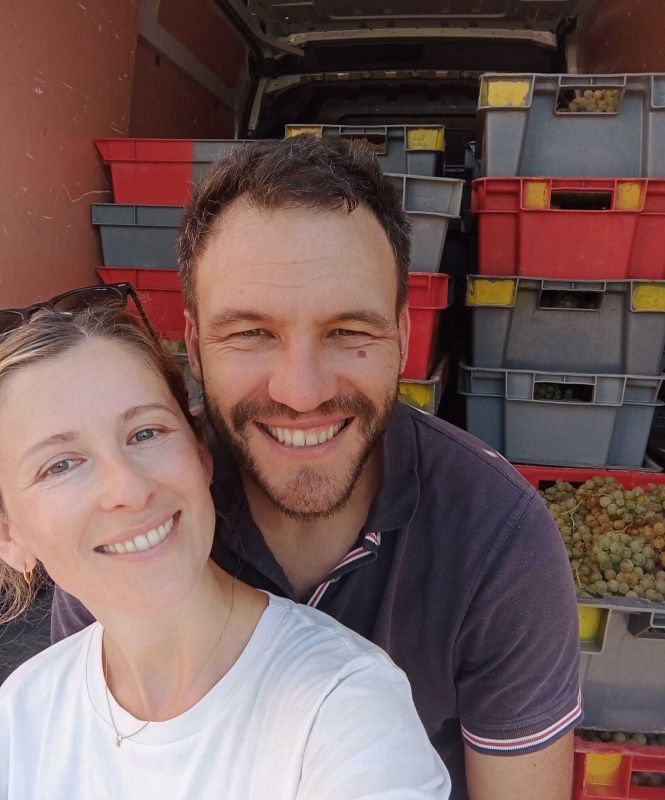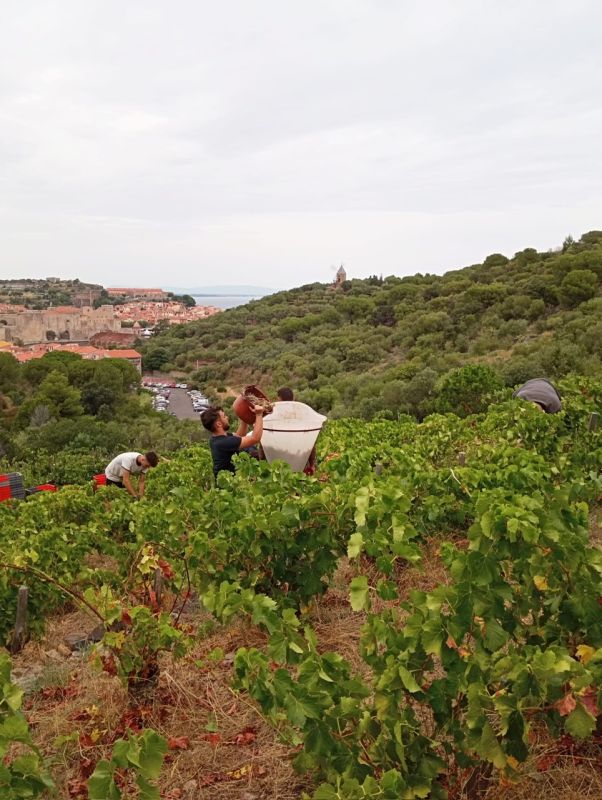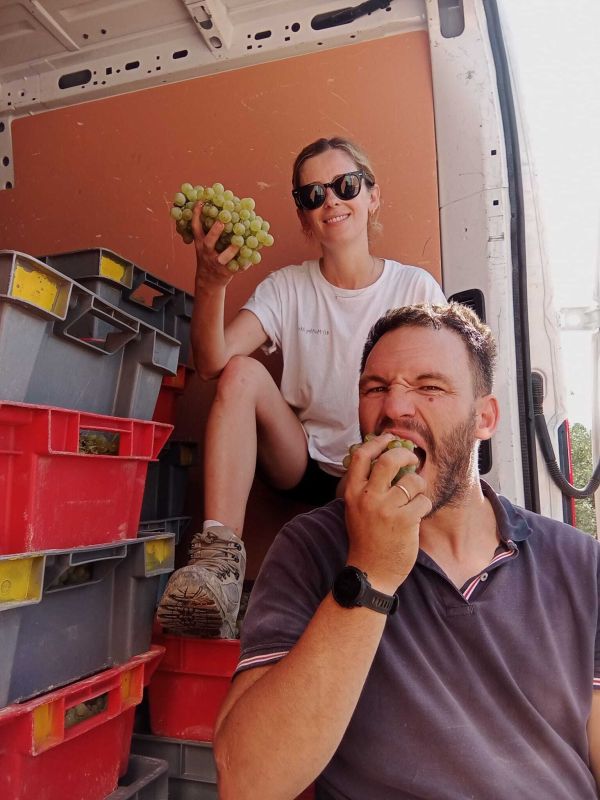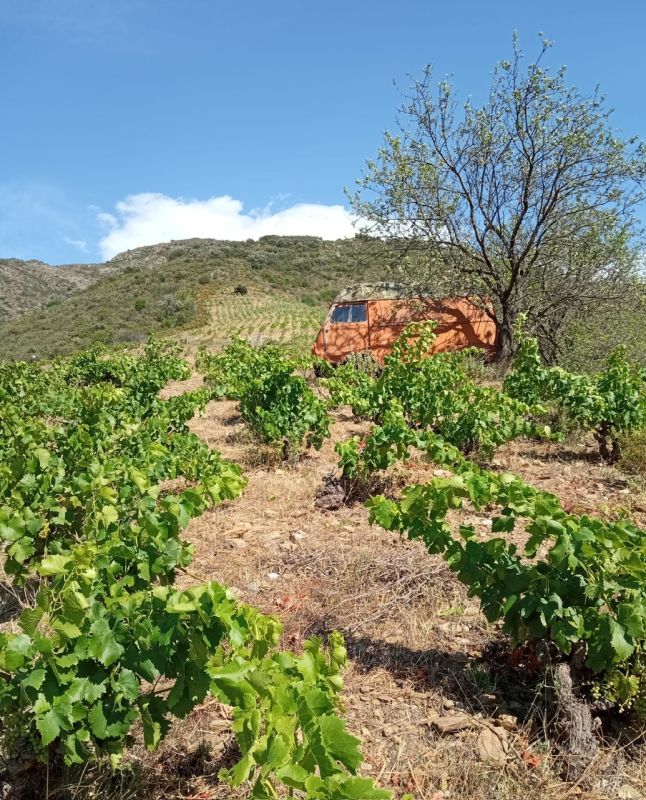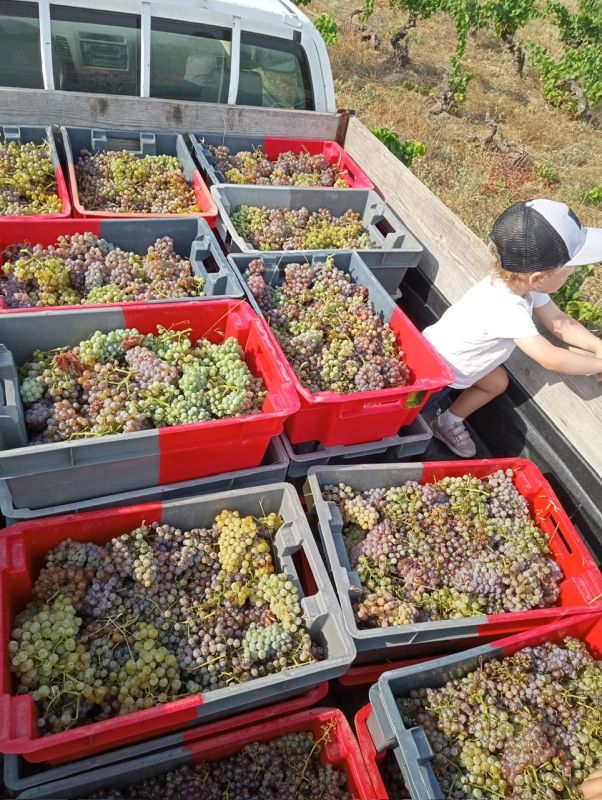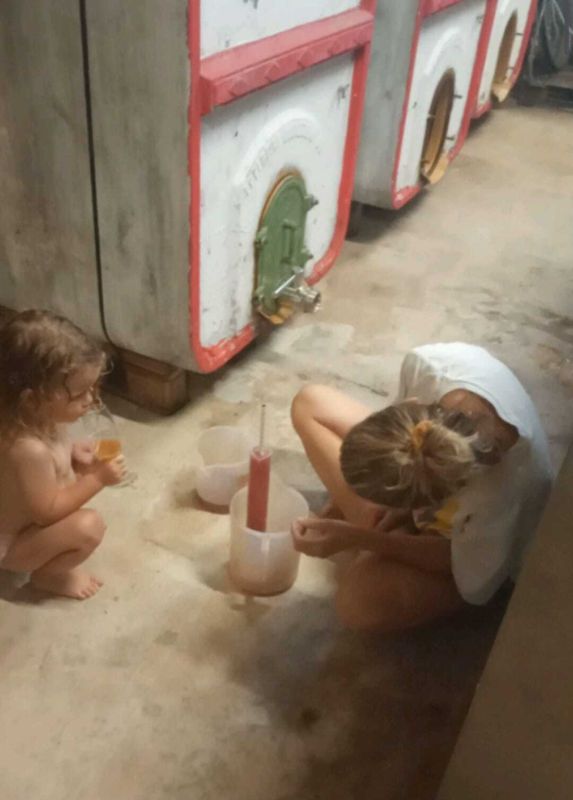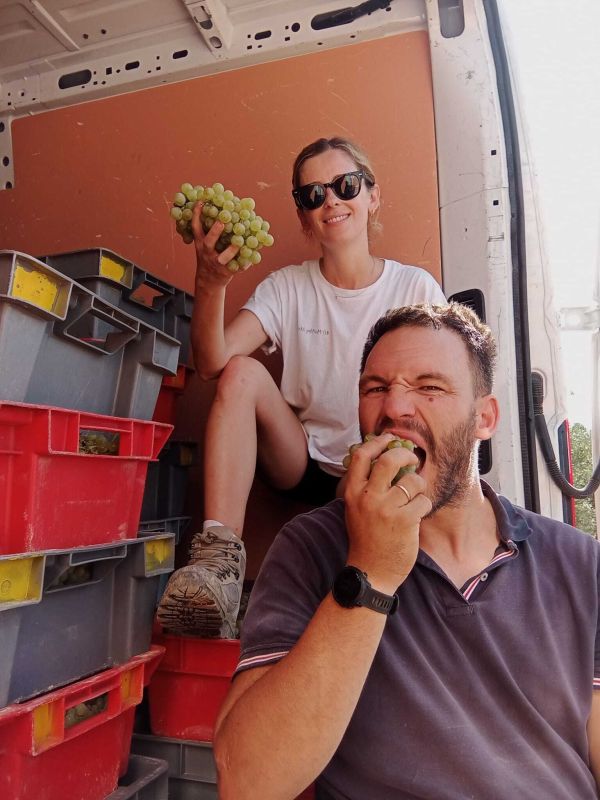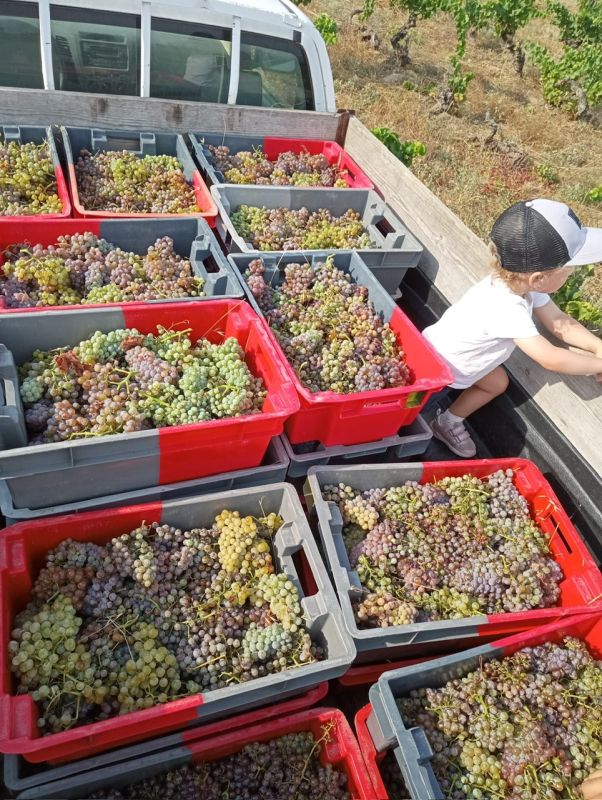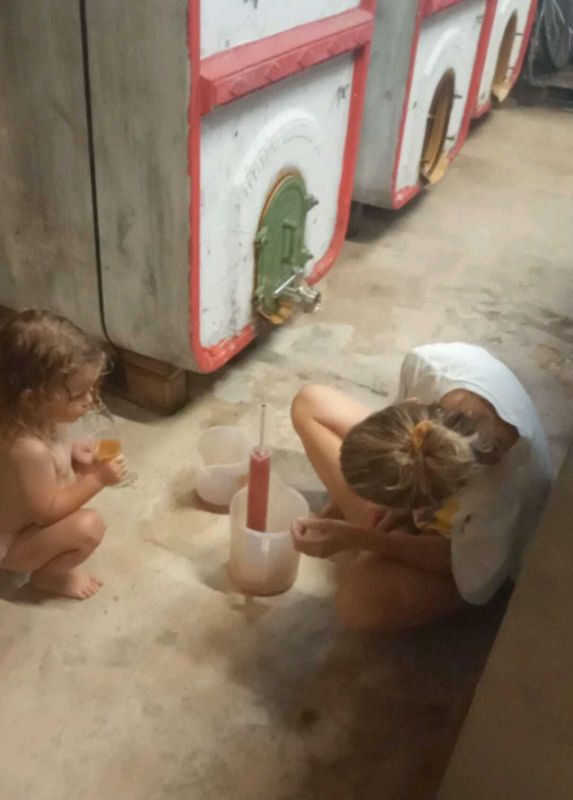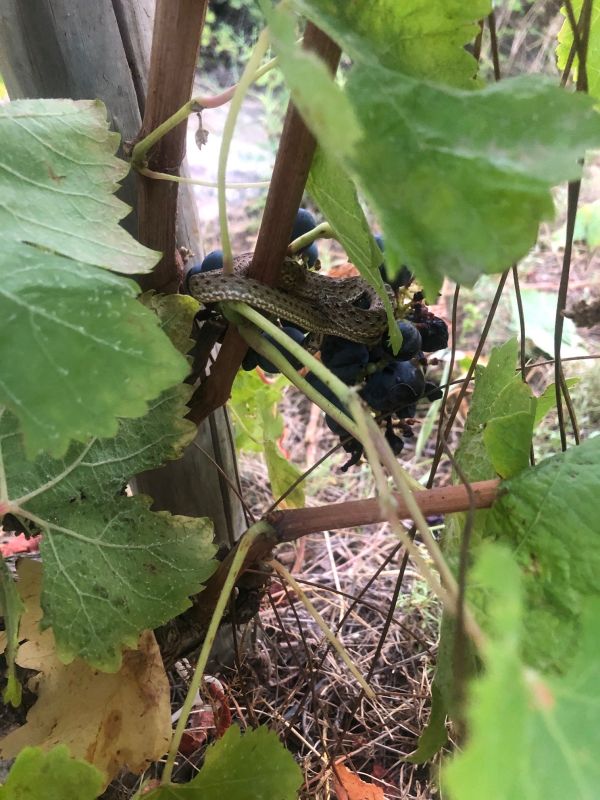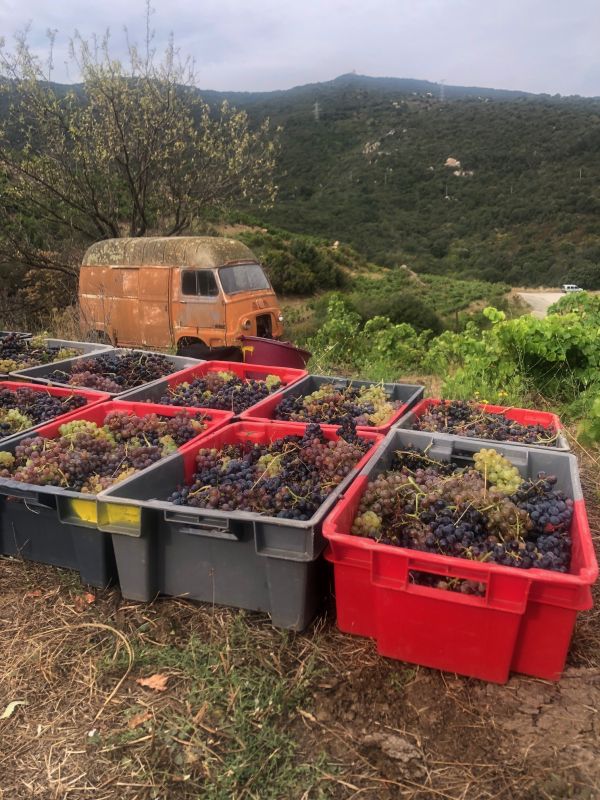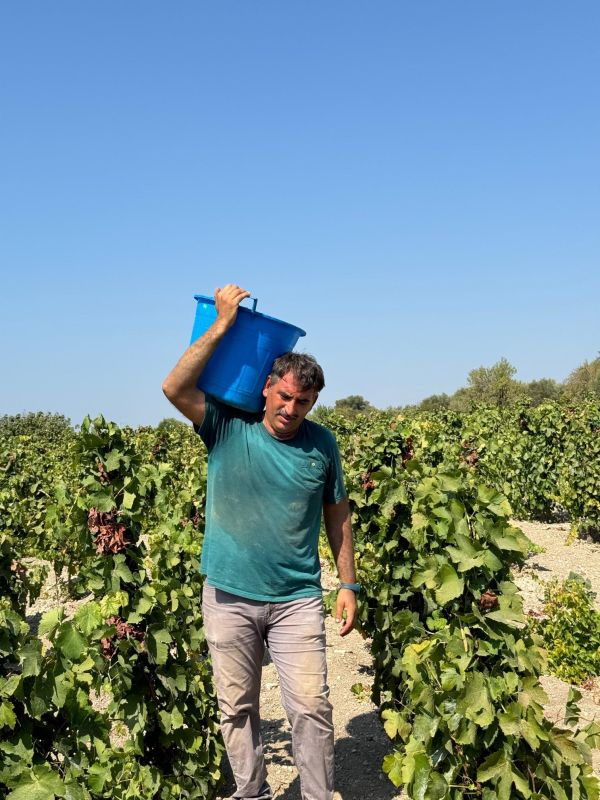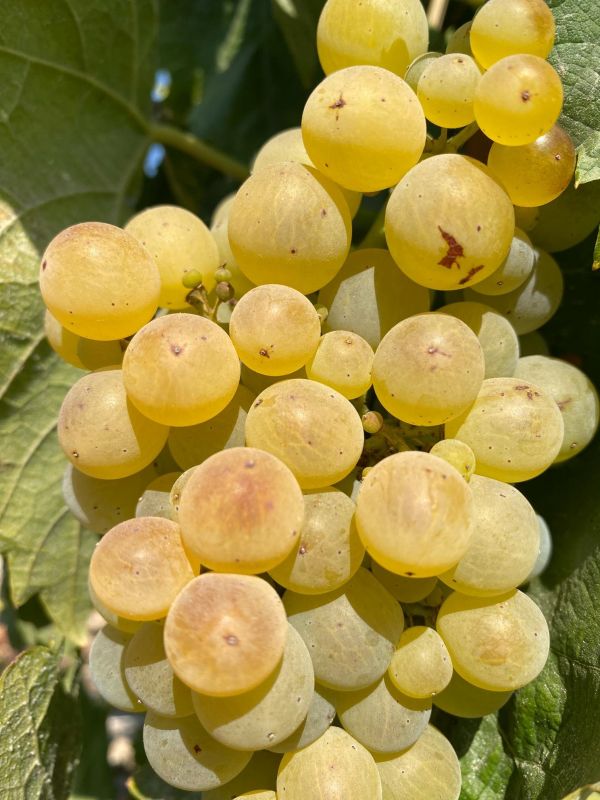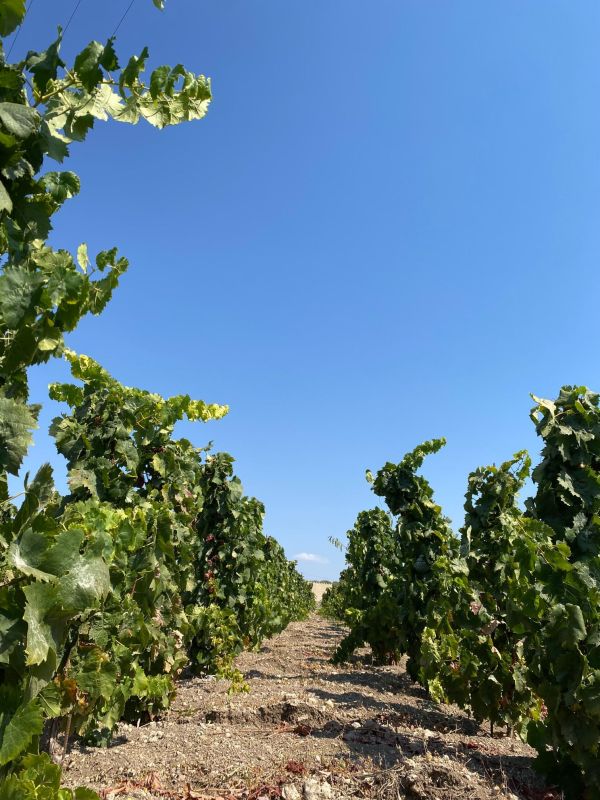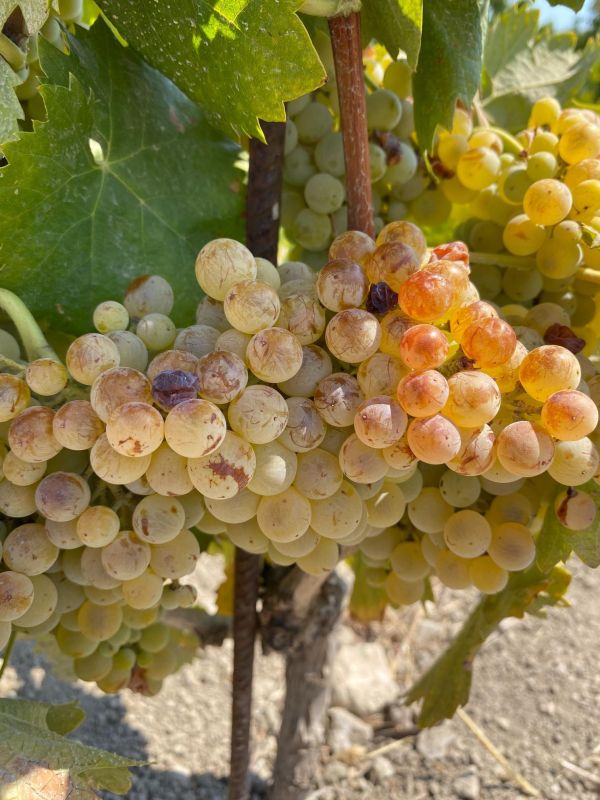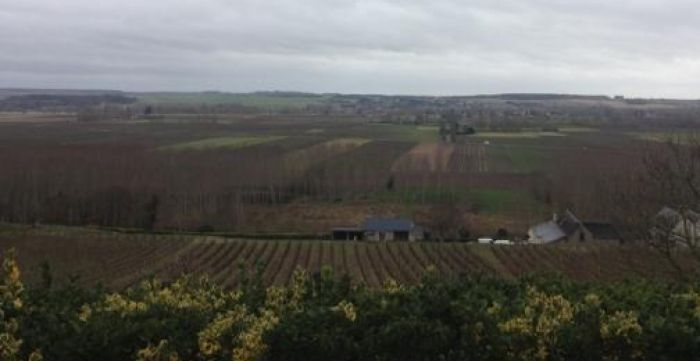April: sumptuous. Summer: rainy. September: happy winemaker: overwhelmed. Winemaker: demoralized. Winemaker: reassured.
2007 could be summed up as a serialized story with multiple cliff hangers. Keep in mind that this is the year we decided to convert all our vineyards to organic viticulture, with an ambitious plan of using herbal treatments and of banning chemical products altogether.
The winter was mild, without frost. March and April were superb, with hot temperatures, dry weather and wines which started to bud three weeks ahead of schedule. Never seen that before…. Blossoming started in the middle of May instead of during the first week of June, which is the normal time. At that point we were experiencing a best of all worlds kind of feeling.
Then May turned rainy and we had to do treatments at a hellish rate. From May 15th till the end of August, it rained every single week, and we had to be in the vines on our tractors at the same pace to contain the dreaded mildew. The first symptoms of the disease became visible in June and got worse in July. Despite our best and quickest efforts, many grapes got contaminated on our wettest terrains.
At that point, our morale was at its lowest. Our tractor drivers were exhausted, and by the middle of August, we had lost half our crop in Les Granges and in the most humid plots in the valley.
To bio or not to bio? (NT: this pun is lost in translation, bio being short for biologique, the French word for organic).
Maybe that’s not the question, since the vines of many colleagues using conventional, chemical treatments also suffered from mildew. We are sure that the vines environment (humidity and soil type, vigorousness of the plants) played an important part in the severity of the disease. Our “all chemical” neighbors were sometimes able to keep “clean” and “ mildew-free” vines, but it had to be to the detriment of the grapes, which were bombarded with anti-mildew and anti-botrytis products.
We had to wait till the end of August for the rain to stop and for everybody to get a rest. We were quite pessimistic on the grapes capacity to ripen: from three weeks ahead, the crop seemed back to a normal early October start.
Then came the celebrated month of September, unsung hero of some “badly started” vintages, like 1997 or 2002. The wind turned to northeast and dried out the soils and the vines. The sun appeared and a slight wave of optimism took over. Even Bernard, anxious and disgusted, started to believe that nothing was lost.
Thanks to this superb September, we began our harvest on Sept. 26th, with a team of 45 pickers ready to cut and to sort. Even more than in previous years, we were extremely vigilant on sorting and keeping only ripe grapes with no dried out, rotten or unripe bunches. We also had three sorters at the entrance to the cellar, working on the conveyor belt before the grapes got into vats.
First, we noticed the low yield of 35hl/ha, due to mildew and sorting. Second, we were astonished by the levels of sugar in the grapes, from 11.7 to 13.3% of potential alcohol, despite the problems of the vintage. Third, we tasted juice that was fresh and pure. There isn’t the kind of concentration we got in 2004 and 2005, but the young wines are clean and elegant.
Now, the alcoholic fermentation is done and the malolactic has started. We taste the wines almost every day, and we are happy with them. The young Japanese sommelier student who was with us throughout the harvest and vinification loves the style of our wines. Bernard himself has trouble hiding behind his moustache his satisfaction and his enthusiasm for the vintage.
I must say that this style of fresh, pure wines is exactly to our taste. We must remain cautious, but it looks like 2007 is going to give wonderful surprises.
